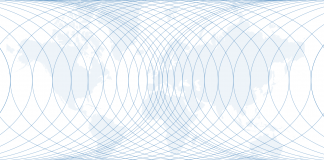It’s been two years since Russia invaded Ukraine, so it’s time to lay out the strategic situation as I see it. In February 2022, I argued that Russia invaded Ukraine primarily to enhance its strategic depth. The wars on Russia prosecuted by Napoleon and Hitler were foiled by the great distances the invaders had to travel to reach Moscow – and by no small amount of Russian blood. That distance exhausted the attackers, breaking them by the time they reached the Russian heartland. The events of 2022 to me were no different: The war was intended to put more miles between Moscow and the West, especially NATO. Russia’s suspicion owes to the Maidan uprising in Ukraine in 2014, which toppled a pro-Russian leader and installed a pro-Western government and for which Moscow believes Washington was responsible.
In my opinion, America’s intentions were not to launch an eventual invasion of Russia, though it did have a small interest in limiting Russian influence. Russian intelligence is competent, and it is unlikely that the Kremlin received reports of American invasion plans ahead of the war in Ukraine. But in statecraft, intention is simply the quacking of ducks. Intentions can change in minutes. What Russia paid more heed to was capabilities. Whatever their intentions, the U.S. and NATO were in no position to invade Russia. Yet Russia feared that their intentions could change, as could their capabilities. A war should begin when the enemy has no intention to fight and has limited capability.
This calculation led Russia to invade Ukraine and thus acquire a vast buffer against American incursion if the U.S. changed its stance. The attack on Ukraine has been a failure. Moscow clearly meant to overrun Ukrainian forces quickly, before the U.S. or NATO could join the fray. Instead, Russia has experienced a significant number of casualties, a coup attempt from a private military group, significant economic losses and a reckoning with its own demographic problems.
Russia also failed to begin the war with the advantage of surprise. No doubt it was motivated by the assumption that the threat of a Russian invasion would cause fear and unrest in Ukraine. That propaganda campaign went on for months and convinced the U.S., through intelligence on Russia’s capabilities, that Russia was going to attack. This caused Washington to undertake an emergency surge in armaments and joint planning with Kyiv. The U.S. imperative was that there be no Russian attack that would cause Ukraine to fall and thus bring Russia to the border of NATO. The Americans weren’t clear on what would happen if Russia occupied Ukraine – and likely the Russians weren’t either – but here again, capability rather than intention must inform decisions.
The signal that Russia would invade meant that Russia could not smash Ukraine with a single decisive blow. The military thus had to change its plans, reorganize its forces and develop a logistical system able to sustain an extended ground offensive. During that time, there was disarray among Russian forces, with a battle breaking out between the Wagner Group and Russian general staff that ended in the aforementioned coup. Moreover, in tipping off the invasion, Russia gave Ukraine time to develop an agile defensive strategy, and gave the U.S. time to provide advanced weapons systems.
The past two years have cost the Russians greatly, the Ukrainians even more. Russia did not fight or organize well, but it performed just well enough to bring the conflict to a point where the U.S. commitment is now at risk – and with it the strategy that caused Russia to fall into the type of war it didn’t expect. That strategic retreat is the point Russia had to reach – and at the moment seems to be reaching.
If Russia takes the whole of Ukraine, the question that is fundamental to the war is what Russia’s next move will be. Putin has made it clear that he believes Ukraine is part of Russia, as are other nations in the region in his mind. Intentions are irrelevant, but if Russia occupies Ukraine and then seeks to drive back NATO, the intentions might be matched by capability.
The U.S. will likely send more weapons, but Russia has ventured too far into Ukraine to be stopped by anything less than overwhelming force. The U.S. fought World War II and the Cold War to prevent Europe from being overrun and controlled by a single power. The inherent resources of Europe pose a potential threat. President Woodrow Wilson saw this. So did Franklin Roosevelt, and so did the various presidents who presided during the Cold War. Blocking Germany and Russia have long been fundamental principles of U.S. foreign policy – not exclusively for its own benefit but fundamentally in pursuit of its own interests.
The war in Ukraine is the continuation of a consistent U.S. foreign policy going back to the beginning of the last century. But what happens in Ukraine will affect what happens in the rest of Europe. The two world wars cost more than they might have if the U.S. had acted sooner. The question now is whether the U.S. confronts Russia – which is pursuing its own interests, as all nations do – sooner or later. The answer to that question necessarily involves Europe. The Cold War was a true alliance. This war is hard to make out on that score. The truth is Europe has the most at stake and needs to put up most of the funding and support for Ukraine.
The situation on the Continent has reached a point in which choices have to be made, and all choices have costs. It is easy to claim that Ukraine is not important to the U.S., but then again our fathers and grandfathers could teach us a great deal about the fantasies of the Philippines or North Africa not meaning much to us. They paid their price, and so did the Europeans. What now?






